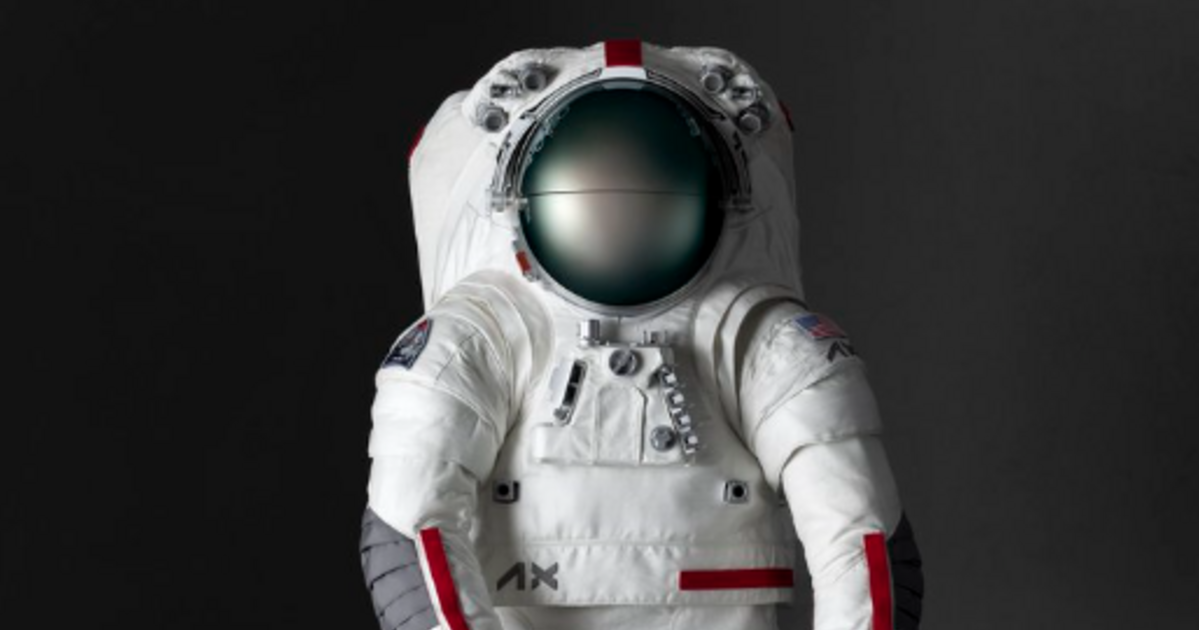Axiom Space presented the new spacesuits for the Artemis program at the 76th International Astronautical Congress in Milan. Artemis is the American space program that aims to send a human to the moon again after 1972. The “Artemis-3” mission, i.e. landing on the new moon, could take place in 2026.
The Italian fashion house Prada and the Californian company Oakley, known for its eyewear, also participated in the design of the Axiom Extravehicular Mobility Unit, or AxEMU, which enables movement outside the vehicle.
The spacesuit has several built-in safety backup systems, has an on-board diagnostics system, an HD camera and a 4G/LTE communications connection built into the helmet. The life support system, equipped with a biometric monitoring device and a carbon dioxide removal system, allows eight hours of wear. The spacesuit can be used by men and women.
So, two years from now, on NASA's Artemis 3 mission, astronauts will be wearing these spacesuits. What is of great interest to us is that the same spacesuit will be worn by the first woman to walk on the moon, but the first astronaut of color and the first non-American astronaut will also wear this spacesuit.
Matt Ondler, President of Axiom Space, noted in his speech during the presentation.
The company's vice president, Russell Ralston, emphasized that artistic design, science and art were combined with Prada's ingenuity to create a safe and comfortable spacesuit.
We shared our knowledge about particularly resistant fabrics, solutions and sewing techniques and learned a lot
Lorenzo Bertelli, Prada's head of marketing, said about the joint work.
Founded by the Prada brothers in Milan in 1913, the company initially produced handbags and travel bags. In the 1990s, it became one of the largest fashion houses with its products with simple cuts and elegant lines. Today, they sell a wide range of products, from perfumes to mobile phones.
Jim Jannard, who founded Oakley in 1975, named his company after his dog. Initially, he sold his unique motorcycle handles out of his box, and worked in sporting goods. It has been producing ski goggles and sunglasses since the mid-1980s. They have about 600 different patents. In 2007, it became the property of the Italian company Luxottica.
Cold, warm, rough
The new spacesuit must withstand extreme conditions. The Apollo missions landed near the Moon's equator, but the Artemis 3 astronauts will spend a week near the celestial body's south pole. According to the latest findings, there may be water ice in the corners of the Moon, which would be a huge relief when establishing a permanent base – and it would also mean a much colder environment than what our ancestors experienced.
The other end is not easy either: in the absence of an atmosphere, sunlight reaches clothes without being filtered. The operation of the built-in cooling system is supported by the energy-reflecting white color of the outer layer of the garment.
Near the poles, the sun is close to the horizon, which can be confusing. Ondler said they worked with Oakley to develop a helmet that provides the right vision. Ultimately, no internal display was built into the spacesuit, its role being replaced by a display worn on the arm.
In addition, the spacesuit must withstand lunar dust, which instead of the weather-eroded particles we know on Earth, consists of sharp fragments that quickly damage equipment. To prevent this, a special patented surface treatment is used, and special cleaning tools are included.
Spacesuit testing will continue until launch and minimal changes will be made if necessary. What is definitely still in progress is developing connectivity and integration with SpaceX's lander, Starship. Not only will AxEMU operate on the Moon, it will be used in the future for its planned private space station programmes, and space tourists can also take it.
China is in a separate race with the United States on the moon, and China itself unveiled its new space suit at the end of September. It is an improved version of China's first spacesuit, the Feitian. It was also explained during the presentation that the new spacesuit allows for easy and free movement. The Chinese can vote on his name until the end of October. They are expected to reside on the Moon in 2030.














































